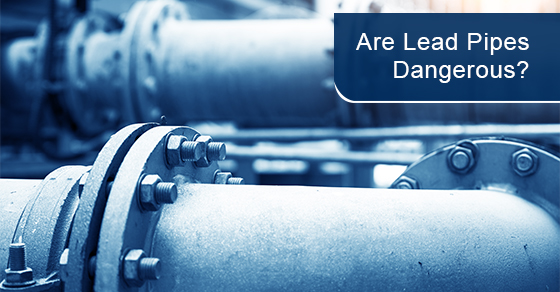 13
Dec 2021
13
Dec 2021
Are Lead Pipes Dangerous?
The possibility of lead in our drinking water has made headlines over the past few years. In Canada, tens of thousands of homes receive drinking water through lead pipes. As the water travels through the system, little bits of lead can get into it and make their way into your cup of water. Repeated exposure can cause serious health problems, such as:
- Reduced cognition
- Increased blood pressure
- Renal dysfunction in adults
- Adverse neurodevelopmental and behavioural effects on children
According to one media report, lead-tainted water can even damage your kidneys and reproductive system. Those at the highest risk are children, the elderly, and pregnant women.
With all these dangers, you may wonder why anyone would use lead for their pipes. The answer is simple: lead is a strong and reliable material. It is also flexible and can be twisted into shapes that allow water to flow easily into homes and buildings.
Lead does not corrode as easily as others, and it does not break, crack, or cause leaks as much as other materials. Additionally, the low cost of lead pipes made it a popular material for builders over the decades. Thus, we have ended up with most water lines being constructed of lead pipes.
How Lead Gets Into Drinking Water
While advocates have been able to draw significant attention to the issue, there are still some ways that lead can make it into your drinking water, including the following:
Service Pipes Made of Lead
The main service line into your home will likely be in the basement or at its lowest point. It will be closest to the road. To determine if your service pipe is lead, see if it is a dark, grey colour. Using a screwdriver, scrape just a little of it. If made of lead, it will be soft and become shiny. A copper line will turn brownish. You can also determine the material of your main water supply line using a magnet. Magnets will not stick to copper or lead but will stick to steel.
It’s important to remember that even if the service pipe leading into your home is not made of lead, other lines along the system could be. You can always call your municipality to find out what their records say.
Lead Pipes in Your Home
If the water system in your home has not been updated recently, you are likely dealing with lead pipes. You could also have lead solder that causes some leakage into your water. To find out, do the same kind of scrape test you did on the service pipe. If the solder or pipe becomes shiny, then it is made of lead.
Pipe Fittings and Fixtures Made of Lead
It’s important to check the faucets in your home for lead content. Many faucets or valves are made of brass, which has some lead elements in them. Although standards have changed to reduce the amount of lead in your home’s fixtures, these parts may not have been updated if you have an older home. You can contact your professional plumber and request your faucets, fittings, and fixtures be replaced. Consider it an investment into your health.
You can also find out how much lead is in your water by asking your utility company or local health department for their latest reports. More importantly, there are steps you can take to reduce your exposure and protect your health and that of your loved ones.
How to Get Lead Out of Your Drinking Water
If you find out that your pipes or service line are made of lead, there are some things you can do to reduce the amount of lead that gets into your drinking water. These include:
Clear Your Pipes
It can be helpful to flush your pipes. The less time water sits in your pipes, the less amount of lead will be able to leach into the water. All it takes is to let the water run for about 30 seconds or more. You should also do this if the water has been sitting in your pipes for longer than 6 hours.
Replace Fixtures
Consider replacing your faucets and fixtures to reduce the amount of lead materials that your water is exposed to. Updating your home’s fixtures to meet current standards can also add to your home’s resale value.
Update Your Plumbing
Changing all your lead pipes and components is the most effective way to protect your drinking water from high levels of lead. While it will cost you more than other methods, consider it an excellent long-term investment. When you have non-lead pipes, you’ll know that you and your family are safe from the harmful health effects they can have. Contact a professional plumber to find out more about their lead pipe replacement services.
Use Cold Water
While boiling water has traditionally been a way to remove impurities, it does not work on lead. Instead, rely on cold water for drinking and cooking, as hot or warm water has been found to contain higher lead levels.
Install a Water Filter
There are some water filters that you can use in your home that can pull out some of the lead from your drinking water. You can install them right on your faucet or buy a water-filtering jug to keep in your fridge. The one drawback to water filters is that you’ll need to replace the filter every few months, which can be expensive.
For more information about protecting your loved ones from the dangers of lead pipes and for other professional plumbing services in Rosedale, call Brothers Plumbing at 1-800-742-8471 or contact us here.
